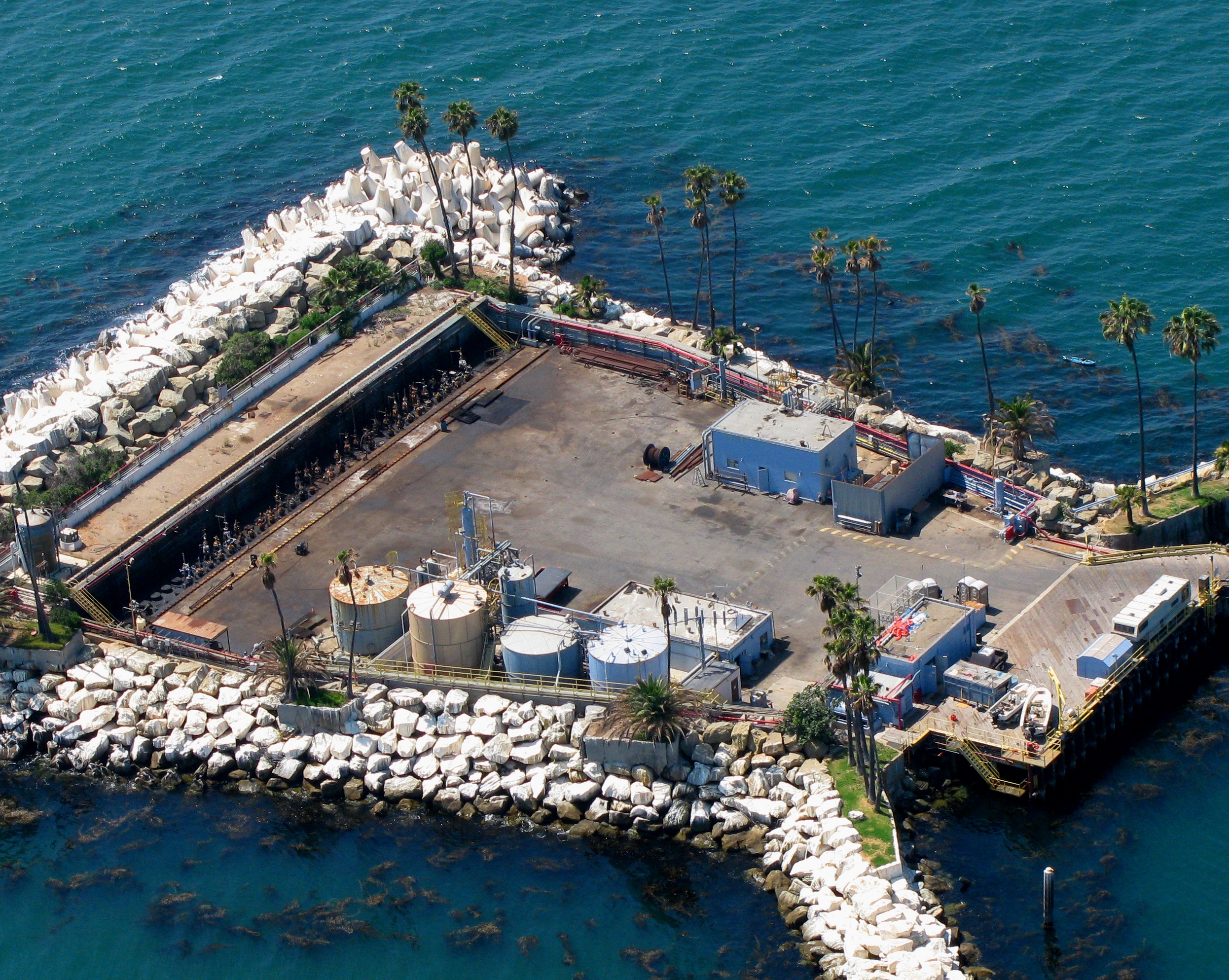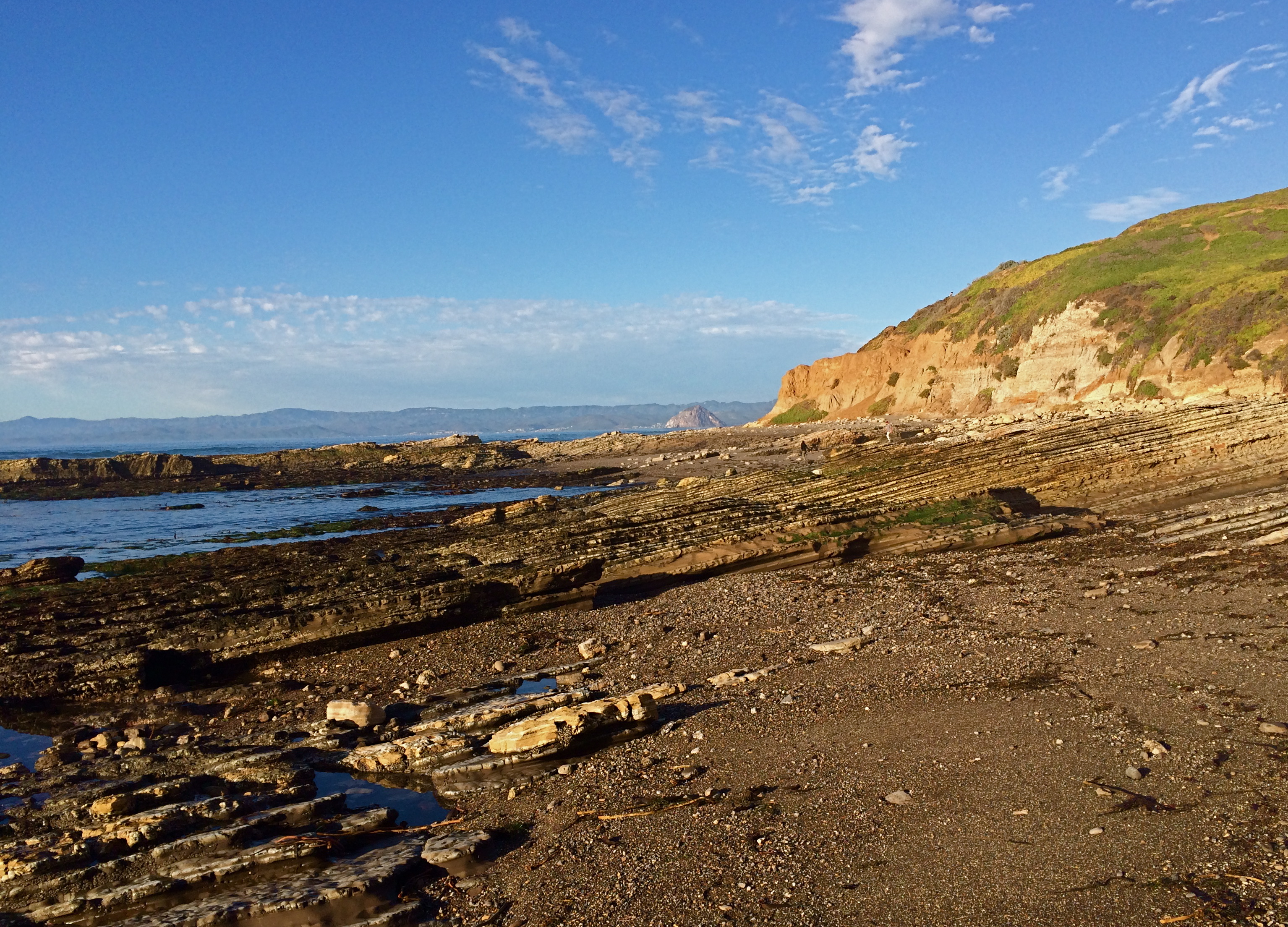|
North Belridge Oil Field
The North Belridge Oil Field is a large oil field along California State Route 33 in the northwestern portion of Kern County, California, about 45 miles west of Bakersfield. It is contiguous with the larger South Belridge Oil Field to the southeast, in a region of highly productive and mature fields. Discovered in 1912, it has had a cumulative production of of oil, and retains in reserve, as of the end of 2006, making it the 40th largest oil field in the state. Setting The oil field is located along the west side of State Route 33, beginning about four miles south of its junction with State Route 46. It is about long by across, paralleling the highway on the southwest. The low Antelope Hills run adjacent to the field on the southwest, and the entire area slopes gently down to the northeast, towards the San Joaquin Valley; agricultural fields and orchards begin on the other side of Highway 33 from the field. Elevations on the field range from about above sea level, whil ... [...More Info...] [...Related Items...] OR: [Wikipedia] [Google] [Baidu] |
San Andreas Fault
The San Andreas Fault is a continental transform fault that extends roughly through California. It forms the tectonics, tectonic boundary between the Pacific Plate and the North American Plate, and its motion is Fault (geology)#Strike-slip faults, right-lateral strike-slip (horizontal). The fault divides into three segments, each with different characteristics and a different degree of earthquake risk. The slip rate along the fault ranges from /yr. It was formed by a transform boundary. The fault was identified in 1895 by Professor Andrew Lawson of University of California, Berkeley, UC Berkeley, who discovered the northern zone. It is often described as having been named after San Andreas Lake, a small body of water that was formed in a valley between the two plates. However, according to some of his reports from 1895 and 1908, Lawson actually named it after the surrounding San Andreas Valley. Following the 1906 San Francisco earthquake, Lawson concluded that the fault extende ... [...More Info...] [...Related Items...] OR: [Wikipedia] [Google] [Baidu] |
Aera Energy LLC
Aera Energy LLC (or simply Aera) is a natural gas, oil exploration and production company started as a joint venture between Shell plc (through Shell USA) and Mobil (which later merged to form ExxonMobil). Headquartered in Bakersfield, California, Aera Energy LLC is a California limited liability company, and one of California’s largest oil and natural gas producers, with an approximate 2015 revenues of over $2 billion. Aera is operated as a stand-alone company through its board of managers. In August 2022, IKAV, a European investment company, announced it was buying Aera from Shell and ExxonMobil. Business areas Most of Aera’s production is located in the San Joaquin Valley. The company also has oil field operations in Ventura, Monterey and Fresno counties and has begun the permitting process to redevelop the East Cat Canyon oilfield in northern Santa Barbara County. Aera produces approximately 126,300 barrels of oil and 32 million cubic feet of natural ga ... [...More Info...] [...Related Items...] OR: [Wikipedia] [Google] [Baidu] |
Mobil Oil
Mobil is a petroleum brand owned and operated by American oil and gas corporation ExxonMobil. The brand was formerly owned and operated by an oil and gas corporation of the same name, which itself merged with Exxon to form ExxonMobil in 1999. A direct descendant of Standard Oil, Mobil was originally known as the Standard Oil Company of New York (shortened to Socony) after Standard Oil was split into 34 different entities in a 1911 Supreme Court decision. Socony merged with Vacuum Oil Company, from which the Mobil name first originated, in 1931 and subsequently renamed itself to Socony-Vacuum Oil Company. Over time, Mobil became the company's primary identity, which incited another renaming in 1963, this time to Mobil Corporation. Mobil credits itself with being the first company to introduce paying at the pump at its gas stations, the first company to produce jet aviation fuel, as well as the first company to introduce a mobile payment device, today known as Speedpass. In 19 ... [...More Info...] [...Related Items...] OR: [Wikipedia] [Google] [Baidu] |
Shell Oil
Shell plc is a British multinational oil and gas company headquartered in London, England. Shell is a public limited company with a primary listing on the London Stock Exchange (LSE) and secondary listings on Euronext Amsterdam and the New York Stock Exchange. It is one of the oil and gas "supermajors" and by revenue and profits is consistently one of the largest companies in the world. Measured by both its own emissions, and the emissions of all the fossil fuels it sells, Shell was the ninth-largest corporate producer of greenhouse gas emissions in the period 1988–2015. Shell was formed in 1907 through the merger of Royal Dutch Petroleum Company of the Netherlands and The "Shell" Transport and Trading Company of the United Kingdom. The combined company rapidly became the leading competitor of the American Standard Oil and by 1920 Shell was the largest producer of oil in the world. Shell first entered the chemicals industry in 1929. Shell was one of the " Seven Sisters" which ... [...More Info...] [...Related Items...] OR: [Wikipedia] [Google] [Baidu] |
Greka Energy
Greka Energy, legally HVI Cat Canyon Inc., is a privately held company engaged in hydrocarbon exploration principally in Santa Barbara County, California. Formed in 1999 after the acquisition and merger of several smaller firms, it is a subsidiary of Greka Integrated, Inc., a holding company headquartered in Santa Maria, California, and is wholly owned by Randeep Grewal. In May 2011, the company changed its name from Greka Oil & Gas Inc. to HVI Cat Canyon Inc. In June 2019, the company filed bankruptcy after federal and state authorities, including the United States Environmental Protection Agency (EPA) and the United States Department of Justice (DOJ), fined the company for oil spills. Greka focuses on petroleum extraction and asphalt processing in California, with holdings in Santa Barbara, Ventura, Kern, and Orange Counties. It is the largest onshore oil operator in Santa Barbara County. In 2008, after several oil spills, the company was referred to by state and federal off ... [...More Info...] [...Related Items...] OR: [Wikipedia] [Google] [Baidu] |
Oligocene
The Oligocene ( ) is a geologic epoch of the Paleogene Period and extends from about 33.9 million to 23 million years before the present ( to ). As with other older geologic periods, the rock beds that define the epoch are well identified but the exact dates of the start and end of the epoch are slightly uncertain. The name Oligocene was coined in 1854 by the German paleontologist Heinrich Ernst Beyrich from his studies of marine beds in Belgium and Germany. The name comes from the Ancient Greek (''olígos'', "few") and (''kainós'', "new"), and refers to the sparsity of extant forms of molluscs. The Oligocene is preceded by the Eocene Epoch and is followed by the Miocene Epoch. The Oligocene is the third and final epoch of the Paleogene Period. The Oligocene is often considered an important time of transition, a link between the archaic world of the tropical Eocene and the more modern ecosystems of the Miocene. Major changes during the Oligocene included a global expansion o ... [...More Info...] [...Related Items...] OR: [Wikipedia] [Google] [Baidu] |
Source Rock
In petroleum geology, source rock is rock which has generated hydrocarbons or which could generate hydrocarbons. Source rocks are one of the necessary elements of a working petroleum system. They are organic-rich sediments that may have been deposited in a variety of environments including deep water marine, lacustrine and deltaic. Oil shale can be regarded as an organic-rich but immature source rock from which little or no oil has been generated and expelled. Subsurface source rock mapping methodologies make it possible to identify likely zones of petroleum occurrence in sedimentary basins as well as shale gas plays. Types of source rocks Source rocks are classified from the types of kerogen that they contain, which in turn governs the type of hydrocarbons that will be generated: * Type I source rocks are formed from algal remains deposited under anoxic conditions in deep lakes: they tend to generate waxy crude oils when submitted to thermal stress during deep burial. * Type ... [...More Info...] [...Related Items...] OR: [Wikipedia] [Google] [Baidu] |
Monterey Formation
The Monterey Formation is an extensive Miocene oil-rich geological sedimentary formation in California, with outcrops of the formation in parts of the California Coast Ranges, Peninsular Ranges, and on some of California's off-shore islands. The type locality is near the city of Monterey, California. The Monterey Formation is the major source-rock for 37 to 38 billion barrels of oil in conventional traps such as sandstones. This is most of California's known oil resources. The Monterey has been extensively investigated and mapped for petroleum potential, and is of major importance for understanding the complex geological history of California. Its rocks are mostly highly siliceous strata that vary greatly in composition, stratigraphy, and tectono-stratigraphic history. The US Energy Information Administration (EIA) estimated in 2014 that the 1,750 square mile Monterey Formation could, as an unconventional resource, yield about 600 million barrels of oil, from ... [...More Info...] [...Related Items...] OR: [Wikipedia] [Google] [Baidu] |
Eocene
The Eocene ( ) Epoch is a geological epoch (geology), epoch that lasted from about 56 to 33.9 million years ago (mya). It is the second epoch of the Paleogene Period (geology), Period in the modern Cenozoic Era (geology), Era. The name ''Eocene'' comes from the Ancient Greek (''ēṓs'', "dawn") and (''kainós'', "new") and refers to the "dawn" of modern ('new') fauna that appeared during the epoch. The Eocene spans the time from the end of the Paleocene Epoch to the beginning of the Oligocene Epoch. The start of the Eocene is marked by a brief period in which the concentration of the carbon isotope Carbon-13, 13C in the atmosphere was exceptionally low in comparison with the more common isotope Carbon-12, 12C. The end is set at a major extinction event called the ''Grande Coupure'' (the "Great Break" in continuity) or the Eocene–Oligocene extinction event, which may be related to the impact of one or more large bolides in Popigai impact structure, Siberia and in what is now ... [...More Info...] [...Related Items...] OR: [Wikipedia] [Google] [Baidu] |
Miocene
The Miocene ( ) is the first geological epoch of the Neogene Period and extends from about (Ma). The Miocene was named by Scottish geologist Charles Lyell; the name comes from the Greek words (', "less") and (', "new") and means "less recent" because it has 18% fewer modern marine invertebrates than the Pliocene has. The Miocene is preceded by the Oligocene and is followed by the Pliocene. As Earth went from the Oligocene through the Miocene and into the Pliocene, the climate slowly cooled towards a series of ice ages. The Miocene boundaries are not marked by a single distinct global event but consist rather of regionally defined boundaries between the warmer Oligocene and the cooler Pliocene Epoch. During the Early Miocene, the Arabian Peninsula collided with Eurasia, severing the connection between the Mediterranean and Indian Ocean, and allowing a faunal interchange to occur between Eurasia and Africa, including the dispersal of proboscideans into Eurasia. During the ... [...More Info...] [...Related Items...] OR: [Wikipedia] [Google] [Baidu] |








